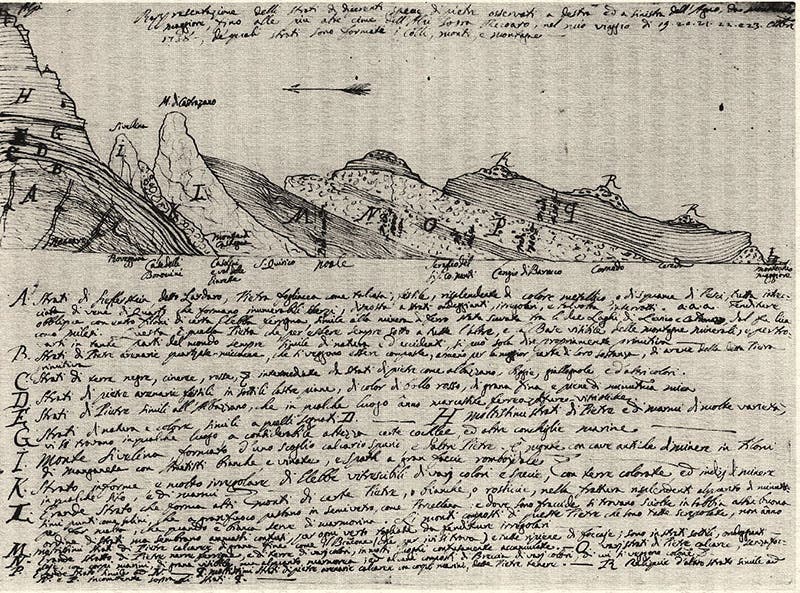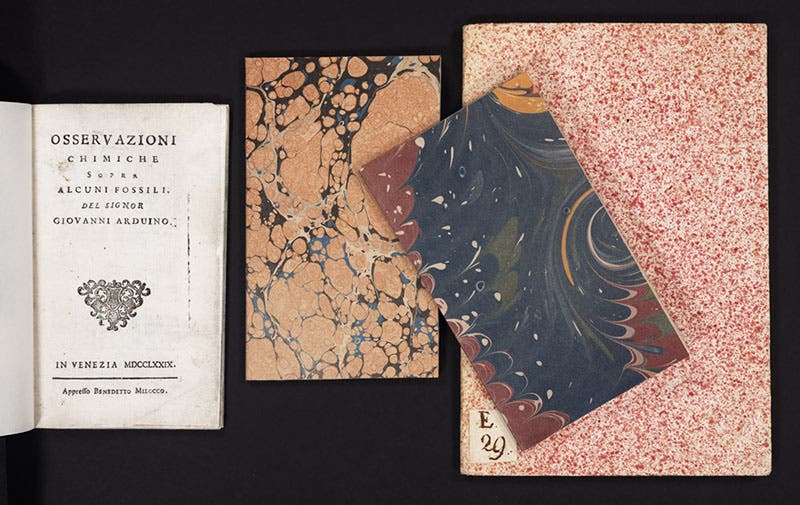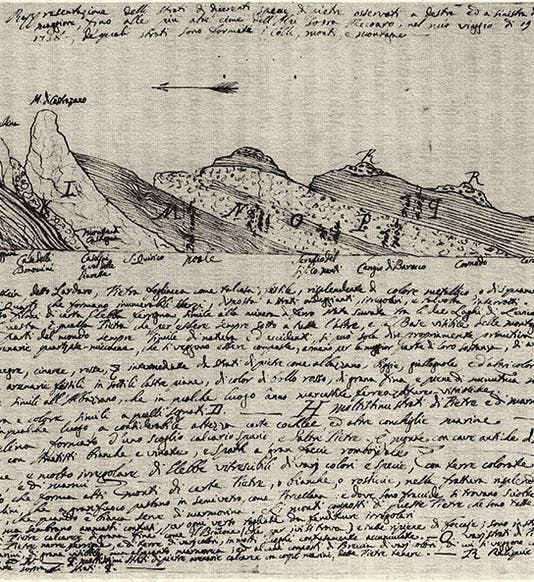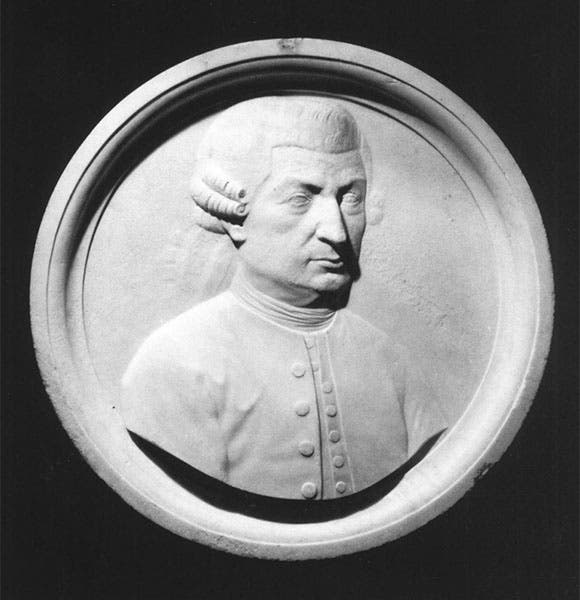Scientist of the Day - Giovanni Arduino

Stratigraphic section of the Valle dell’Agno near Vicenza, with north to the left, drawing and notes by Giovanni Arduino, 1758, Verona Public Library (Wikimedia commons)
Giovanni Arduino, an Italian mining expert turned geologist, was born Oct. 16, 1714, in the province of Verona in the Veneto, the region north and west of Venice. He spent over 20 years in the mines of Tuscany, Lombardy, and the Veneto as a kind of self-taught mining engineer and surveyor, but paying great attention to mineralogy and petrology, the makeup of minerals and rocks. By the 1750s, his interests shifted to the larger-scale patterns of the Earth’s strata, and the sequences in which they were found. In an age when many naturalists still thought that all the Earth’s rock formations had been deposited by a single catastrophic event, the Great Flood of Noah, Arduino came to understand that rocks must have been laid down in stages over eons. Studying the rocks that lay between the plains of Venice and the Alps, he identified four different kinds of formations, which he called “orders”. The Primary order, which consisted of granite or schist and had no stratification, lay underneath all other formations and also made up much of the Alps. Lying on the flanks of the Primary rocks was the Secondary order, consisting of gneisses and marbles, which were foliated but not stratified, and had some fossils. The third order, the Tertiary, consisted of sandstones and limestones, were clearly stratified, and contained abundant fossils. The fourth order he did not name, but it was intended to include the soils and gravels of the alluvial plains of the Veneto, and later geologists would naturally call it the Quaternary.
Arduino announced his four orders in a letter to Antonio Vallisneri, Jr., son of an important Italian geologist and a good friend (we did a post on Vallisneri senior some years ago). Vallisneri junior published Arduino’s latter and an earlier one in 1760 in an Italian journal; the publication is usually known as the Due lettere. But the journal was obscure (we do not have it in our holdings), and Arduino wrote nothing else about his four orders, so his system was mainly disseminated by others, and his name often got lost in the process. But it is still in use, more or less as Arduino laid it out in 1759. The best-known graphic by Arduino that survives is a detailed stratigraphic drawing he made of the rocks along the Valle dell’ Agno (Agno valley) near Vicenza in northern Italy, and it was made in 1758, so it does not explicitly show the four-order system, although you certainly get the idea of over-lying orders from its layout. It also reveals that Arduino had considerable drawing skills, very useful if you are trying to make sense of the chaotic nature of the Earth’s surface. You can find the drawing in, of all places, the Verona Public Library. Or you can view it, as I did, on Wikimedia commons.

Four short treatises or letters on geological topics, written by Giovanni Arduino in the period from 1777 to 1791 and subsequently published; the marbled-paper bindings are recent (Linda Hall Library)
Some years ago, we purchased four short treatises by Arduino, some in the form of letters that were written by Arduino to various colleagues. They do not discuss his four-order system, but they do deal with other geological problems, and as Arduino published so very little, we are happy to have them. They are also quite handsome and make an attractive group portrait (third image). We acquired them in 2008 from the eminent New York City bookseller, Jonathan Hill, who issued his first catalog the same year I made my first rare-book-acquisition recommendation to the Linda Hall Library. It has been a fruitful association, for all of us.
There is no contemporary portrait of Arduino, at least none that I am aware of. We chose for his likeness a medallion that was made sometime before 1850 for the Venetian Pantheon in Campo Santo Stefano, Venice (second image).
William B. Ashworth, Jr., Consultant for the History of Science, Linda Hall Library and Associate Professor emeritus, Department of History, University of Missouri-Kansas City. Comments or corrections are welcome; please direct to ashworthw@umkc.edu.







